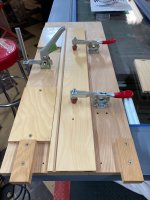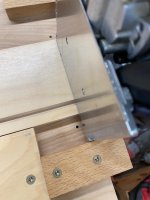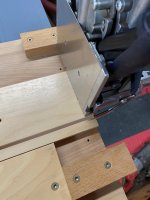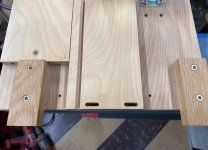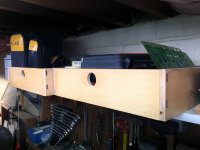What do you all find you use the most for shop fixtures, jigs, racks, etc.? I see a range of fastening options used including glue, glue plus 18Ga. brad nails, glue plus 23Ga. pins, screws, screws plus glue.
I need to build some clamp racks and I'm wondering if I should buy a new nailer to help glue them up, and whether I should reinforce with screws afterwards. For shop fixtures where nail holes aren't a concern do you go with 18 gauge for strength over pins, and not bother with screws?
Maybe I'm overthinking this, but I don't have much experience with this type of project.
I need to build some clamp racks and I'm wondering if I should buy a new nailer to help glue them up, and whether I should reinforce with screws afterwards. For shop fixtures where nail holes aren't a concern do you go with 18 gauge for strength over pins, and not bother with screws?
Maybe I'm overthinking this, but I don't have much experience with this type of project.

